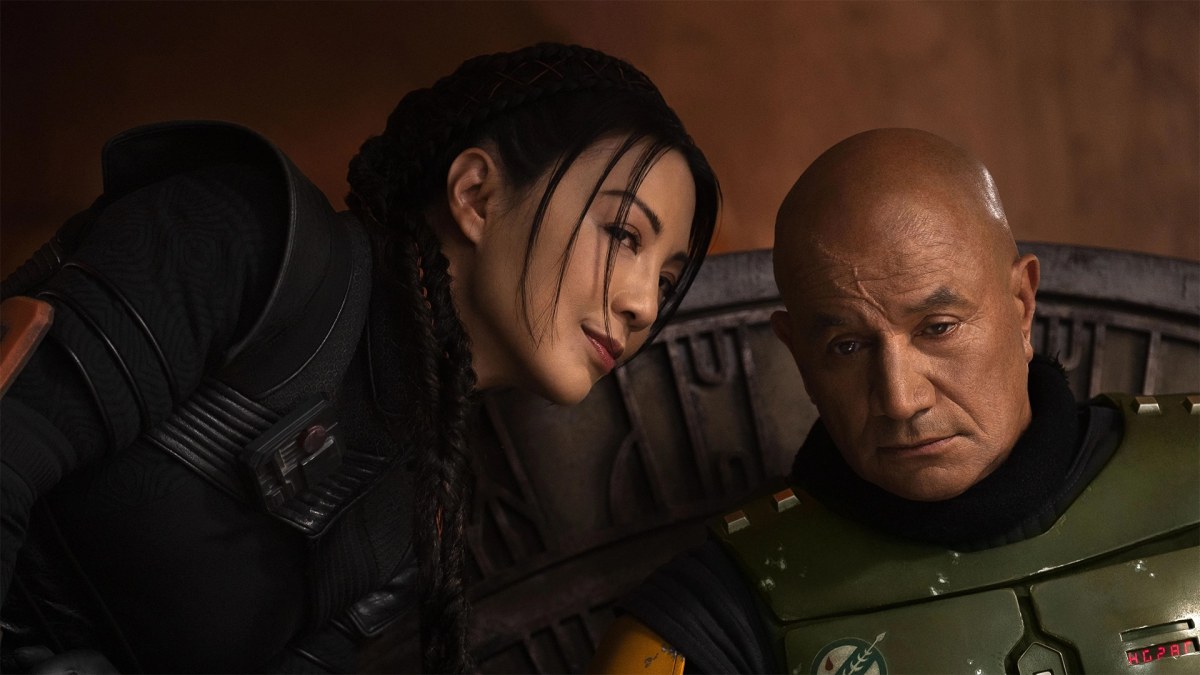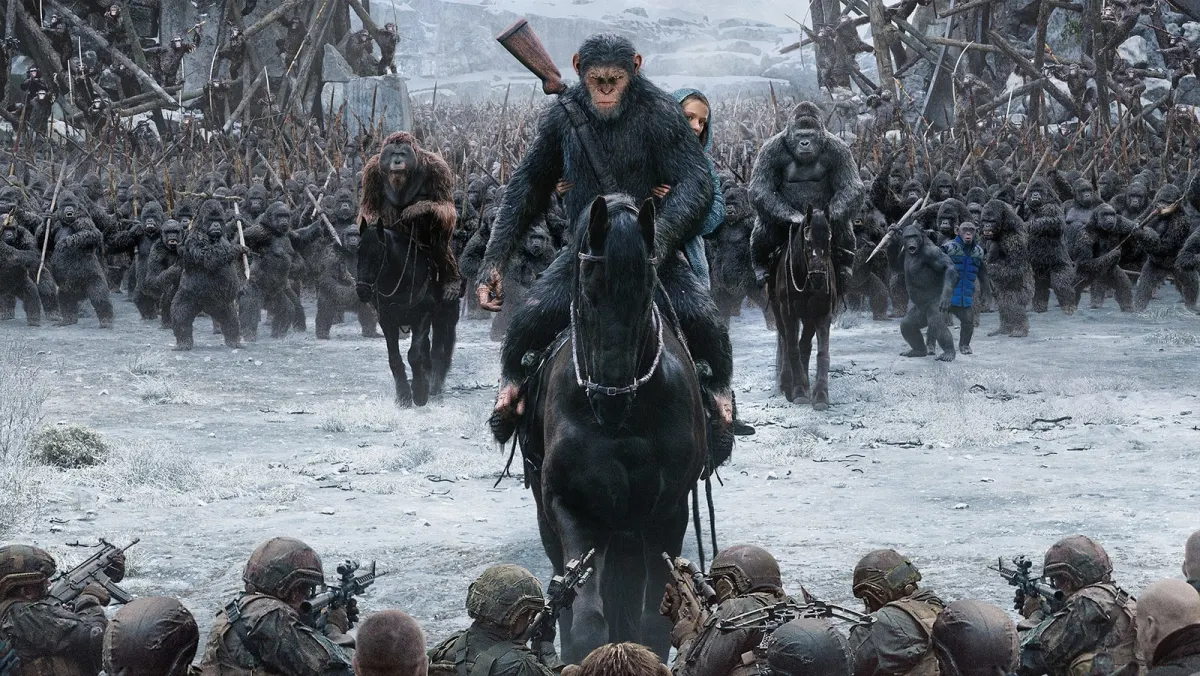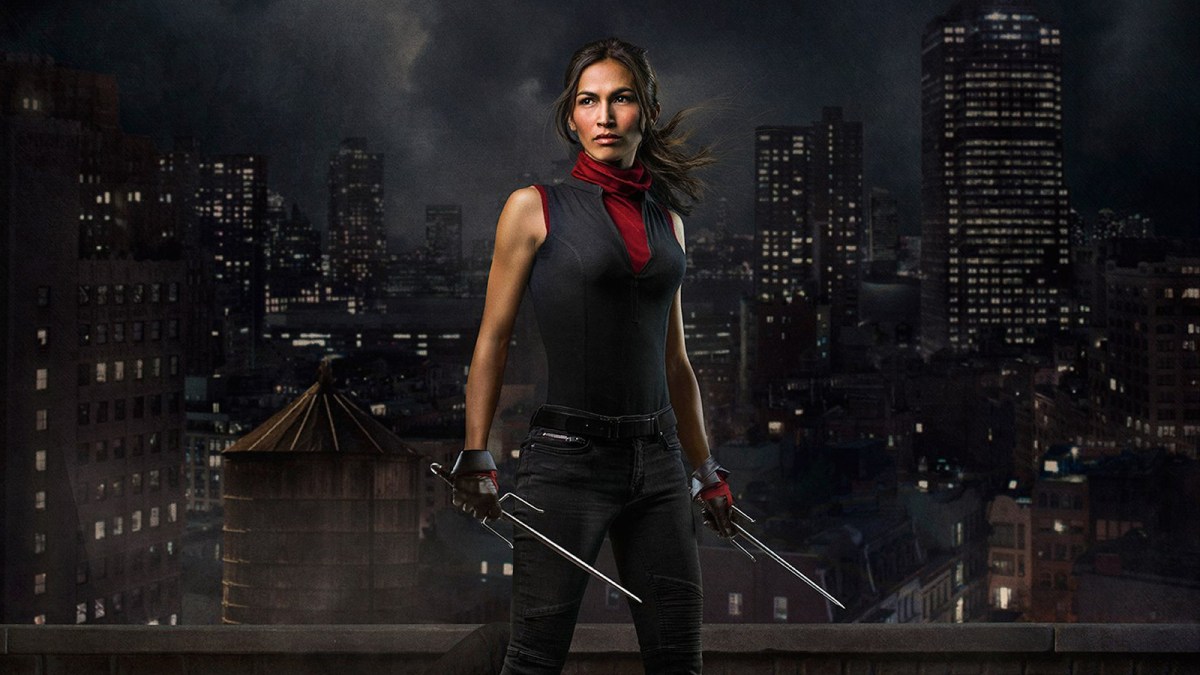This discussion and review contains some spoilers for The Book of Boba Fett episode 3, “The Streets of Mos Espa.”
As The Book of Boba Fett approaches its midpoint, it remains surprisingly bloodless for a show about the galaxy’s most ruthless bounty hunter.
In “The Streets of Mos Espa,” there is a strong sense of showrunner Jon Favreau aligning elements for the rest of the season. This is the episode that finally ties the extended flashback sequences from the previous episodes to the present, with the reveal that the Pyke Syndicate has laid claim to the territory that Fett (Temuera Morrison) now claims to control. Fett had dealt with the Pykes during his time on the Dune Sea, raiding a space shipment and attempting to set up a protection racket.
Three episodes in, The Book of Boba Fett feels like a much more serialized show than The Mandalorian was. The Mandalorian was a show with overarching plots and mysteries, particularly concerning the identity and purpose of the Child, with Din Djarin (Pedro Pascal) trying to protect his young ward while avoiding the machinations of villains like Moff Gideon (Giancarlo Esposito). However, most of the episodes of The Mandalorian were reasonably self-contained adventures.
This structure worked well as an homage to the classic movie serials that had inspired George Lucas to create Star Wars, down to the late addition of the “Episode IV” subtitle to the first film in 1981. These serials were about the continuing adventures of roguish heroes, with recurring villains and larger driving storylines, but were also intended to be satisfying on their own terms as pieces of spectacle and storytelling.

In contrast, as the title implies, The Book of Boba Fett plays as a single story that has been broken up into seven chapters. Those chapters feel less like distinct elements than part of some greater whole. There is no reason Fett’s time with the Tuskens couldn’t have been structured as the entire first episode rather than split as flashbacks across the first two. There’s also no reason the entire Hutt subplot couldn’t have fit in a single episode instead of being split across the second and third.
There are certainly arguments to be made in favor of this approach. A lot of modern criticism, perhaps shaped by the “absolutely everything, all of the time” experience of being online, decries the idea of “filler” episodes, treating anything that doesn’t advance the primary plot as somehow superfluous or pointless. It’s notable that the word “filler” came up repeatedly in criticisms of The Mandalorian, and perhaps the serialization of The Book of Boba Fett is a response to that.
However, the limits of this sort of serialization are becoming obvious at this point into The Book of Boba Fett. Jon Favreau has written each of the three episodes to date, and it is clear what he is attempting to do with the larger arcs of the show. The flow of the season to this point works reasonably well in a “big idea” or “index cards on a whiteboard” way. However, the actual execution of these plot beats is frustratingly inelegant.
Consider, for example, the Tuskens. The first two episodes of the season feature extended flashbacks of Fett integrating into Tusken society, earning their trust and learning their ways. However, the Tuskens are then brutally murdered entirely off-screen during the opening act of “The Streets of Mos Espa,” while Fett is out trying to extort protection money from the Pyke Syndicate. Fett comes home to find all the Tuskens dead – every single one of them.

On paper, this makes sense. When the audience reunited with Fett in the second season of The Mandalorian, he was a nomad wandering through the wasteland alone, meaning that he always had to part ways with the Tuskens. Given the narrative space afforded to the Tuskens in the first two episodes, it is perfectly reasonable to use them as emotional leverage, to have their death function as a trauma that will potentially motivate Fett across the rest of the season.
However, in practice, the structuring of the episode feels off-balance. The teaser sequence finds Fett recruiting a young biker / cyborg gang in Mos Espa, which then leads to a flashback in which the Tuskens are all brutally murdered off-screen. Fett assembles the bodies into a pyre and burns them, including the stick that belonged to the youngest members of the tribe. However, the episode then cuts back to an assassination attempt on Fett, leading to a speeder chase through Mos Espa.
The death of an entire tribe of people feels like something that deserves room to breathe. It feels like a plot point and character beat that should be positioned at a moment of emotional climax in the story. It would probably work well as the closing shot of an episode, leaving the audience to process it over the week that follows. Failing that, it might work juxtaposed with some emotional imagery in the show’s present, like Fett’s adoption of the street kids as a newfound family.
However, there’s no real narrative or thematic unity to “The Streets of Mos Espa” as a single episode of television. It just feels like a bunch of plot beats that need to happen at some point in the middle of the larger seven-hour story of The Book of Boba Fett, instead of being structured as a satisfying narrative unit of itself.

Most obviously, there’s a resistance to the sort of actual change that long-form serialized story needs. As one might expect from a streaming show that is entirely dedicated to rewriting the death of a secondary character from Return of the Jedi, The Book of Boba Fett is wary of actually throwing anything away. There are very few stakes to be found within the show, which is a problem for a series that is supposedly about the underworld of one of the most dangerous places in the galaxy.
Black Krrsantan (Carey Jones) illustrates this treatment in “The Streets of Mos Espa.” Although Krrsantan first appeared in Marvel’s recent Star Wars comic, the character became an internet sensation during his first on-screen appearance last week in “The Tribes of Tatooine.” The internet loves Black Krrsantan, and it’s easy to see why. He’s a gigantic badass (and, apparently, “hot”) Wookiee bounty hunter who struts around a desert planet like it’s nothing.
In “The Streets of Mos Espa,” Krrsantan tries to straight-up murder Fett during the episode’s first big action sequence. It takes the entire ensemble to wrestle Krrsantan into the rancor pit. It would make sense for Fett to kill Krrsantan, to send a message. After all, this isn’t an employee who failed in a difficult assignment; this is a bounty hunter who tried to murder him as he lay sleeping in his bacta tank. Instead, Fett releases Krrsantan with “no hard feelings,” explaining, “It was that or kill him.”
There is no plot or character reason to keep Krrsantan alive within the world of “The Streets of Mos Espa,” even if the plotting driving The Book of Boba Fett means that he will likely return as an ally to Fett at some point. More cynically, it seems likely that the production team calculated that Krrsantan could be a popular breakout character, and so killing him off – while dramatically justified and likely emotionally effective – would minimize the possibility of capitalizing on that popularity.

In some ways, “The Streets of Mos Espa” feels like assembling a toy set. Notably, before departing Tatooine, the Hutts offer Fett the gift of a young rancor. The rancor was one of the most iconic aspects of Jabba’s Palace in Return of the Jedi, so it makes sense to reset that premise to factory parameters. Much like The Book of Boba Fett reimagined its eponymous bounty hunter as a lovable and compassionate hero, the show also reinvents the rancor as a less threatening presence.
The rancor’s trainer (Danny Trejo) helpfully explains that the rancor is “quite peaceful unless threatened,” telling Fett that “they can become quite loving.” Fett expresses his desire to ride the rancor, setting up a payoff that will inevitably arrive later in the season. There’s a strange sense of domestication to all of this, as if something wild and unruly has been tamed. Like the nostalgic bacta tank dreams from the season’s early episodes, the metaphor writes itself.
More immediately, “The Streets of Mos Espa” suggests the limits of setting an entire seven-hour Star Wars adventure in one relatively confined geographic location. Even the franchise’s two-hour movies offer greater diversity of setting. The introduction of the young gang with their brightly colored scooters feels like an attempt to add a little visual variety to the dusty and dingy world of Tatooine. However, the results don’t work; the episode’s climactic chase feels curiously inert.
Three episodes into The Book of Boba Fett, it increasingly feels like the character’s original prototype action figure was more dangerous than the version that made it to screen.





